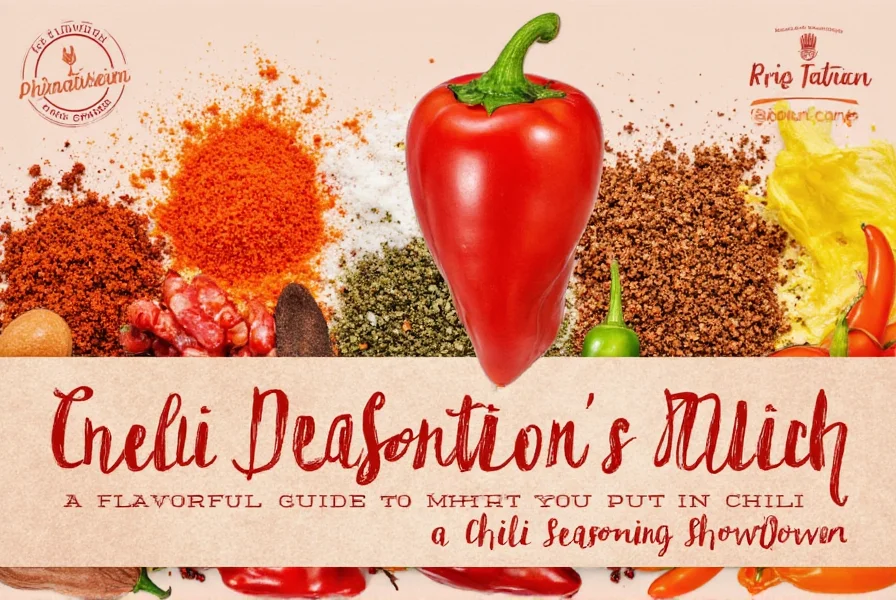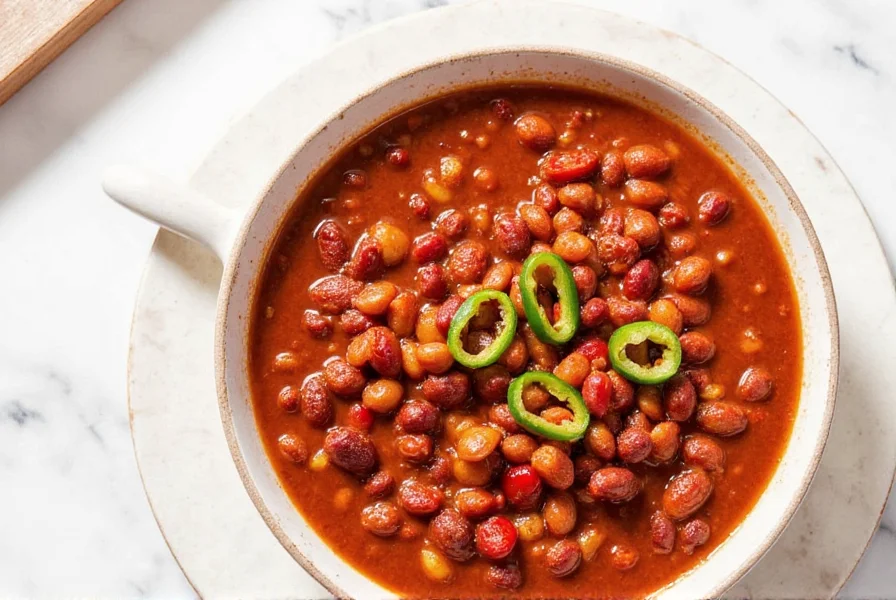Table of Contents
Homemade Chili Seasoning Recipe
Creating your own chili seasoning at home ensures fresh, customizable flavors without artificial additives. This simple recipe makes 1/4 cup of seasoning blend (enough for 4-6 servings of chili) and takes just 5 minutes. Follow these precise measurements for balanced heat and depth.
- Chili powder: 2 tablespoons (use 100% ground chilies, not blends)
- Cumin: 1 tablespoon (ground, for earthy warmth)
- Smoked paprika: 2 teaspoons (adds rich depth without heat)
- Garlic powder: 1 teaspoon
- Onion powder: 1 teaspoon
- Dried oregano: 1 teaspoon
- Cayenne pepper: 1/2 teaspoon (adjust for heat preference)
- Black pepper: 1/4 teaspoon
- Salt: 1 teaspoon (use sea salt for cleaner flavor)
Step-by-step instructions:
- Combine all ingredients in a small bowl
- Mix thoroughly with a whisk or spoon
- Test a pinch in warm water to adjust heat/salt before final use
- Store in an airtight container away from light

Customization Variations
Adjust this base recipe for different flavor profiles:
- Smoky version: Replace regular paprika with 2 teaspoons chipotle powder
- Mild version: Omit cayenne, add 1 teaspoon cocoa powder for richness
- Southwest twist: Add 1/2 teaspoon coriander and 1/4 teaspoon cinnamon
- Extra heat: Increase cayenne to 1 teaspoon + 1/4 teaspoon red pepper flakes
Storage Tips
For maximum freshness:
- Store in an airtight glass jar in a cool, dark place
- Use within 6 months for peak flavor
- Toast whole cumin seeds before grinding for deeper aroma (optional)
- Never refrigerate - moisture causes clumping
How to Use Your Chili Seasoning
Use 2-3 tablespoons per pound of meat or 4 cups of beans. For best results:
- Toast spices in dry pan for 1 minute before adding liquid ingredients
- Add to browned meat before adding tomatoes/beans
- Taste and adjust salt/heat after 10 minutes of simmering
Frequently Asked Questions
Can I substitute chili powder with cayenne pepper?
No - chili powder is a blend of chilies and spices, while cayenne is pure heat. Using only cayenne will make your chili unbearably spicy. If you need more heat, add cayenne gradually to the base recipe.
Why does my chili seasoning clump together?
Moisture is the culprit. Always use dry measuring cups, store in airtight containers, and avoid exposing to steam. If clumping occurs, sift through a fine mesh strainer before use.
How much seasoning should I use for canned chili?
For a 15-ounce can of plain chili, use 1 tablespoon of seasoning blend. Taste after heating and adjust as needed since canned products often contain hidden salt.
What's the difference between "chili powder" and "chili seasoning"?
Chili powder is a single-ingredient spice made from dried chilies. Chili seasoning is a blend that includes chili powder plus cumin, oregano, and other spices. Our recipe uses pure chili powder as a base for better control.
| Spice | Why It Matters | Quality Tip |
|---|---|---|
| Chili powder | Provides base flavor and color | Look for 100% ground chilies (not "chili seasoning" blends) |
| Smoked paprika | Adds depth without excessive heat | Choose Spanish-style for sweet smoke or chipotle for smoky heat |
| Cumin | Earthiness and warmth | Buy whole seeds and grind fresh for maximum aroma |











 浙公网安备
33010002000092号
浙公网安备
33010002000092号 浙B2-20120091-4
浙B2-20120091-4